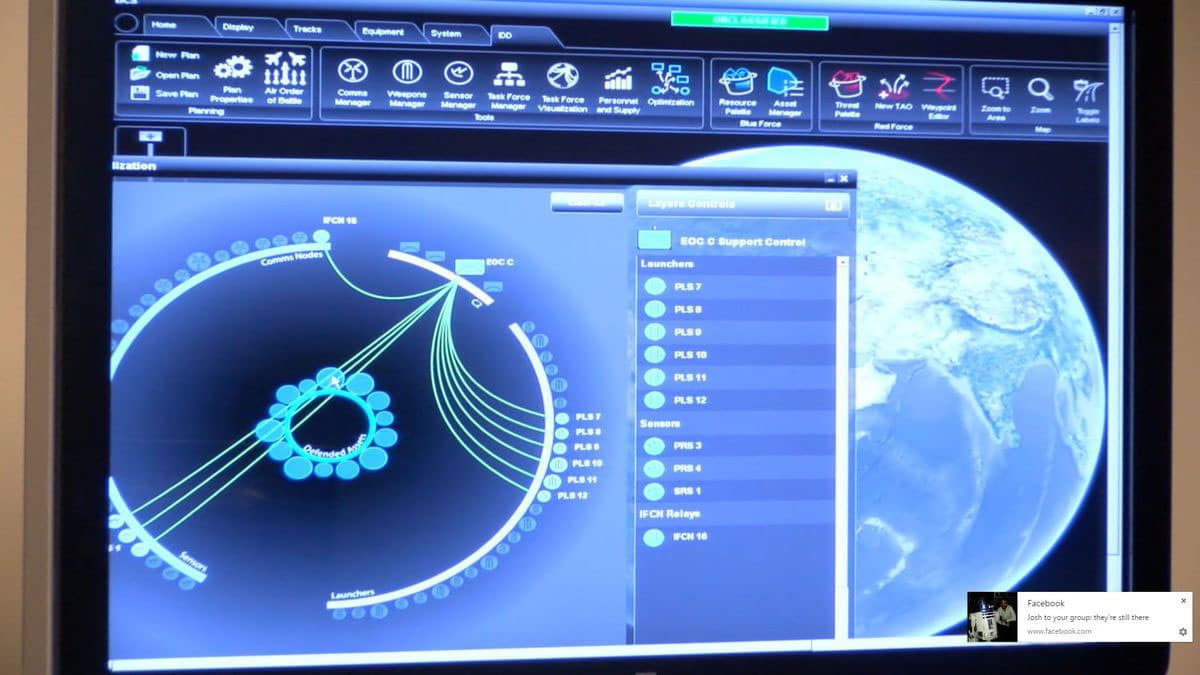
The Integrated Air and Missile Defense Battle Command System (IBCS) is the future command and control system for U.S. Army air defense assets. It is intended is to integrate the communications between weapon launchers, radars, and the operators, allowing an air defense unit, such as a Patriot battery, to fire its interceptors using information provided by the radar of another.1 In some cases, this integration will permit an Army air defense unit to defend a larger area, as the unit’s engagement zone will be less limited by the view of its own organic radar. It will also reduce the chance of interceptor wastage, by reducing the chance that two or more air defense units will engage the same target. Once deployed, IBCS will take the place of seven other Army command and control systems currently in use.2
There is also potential to move beyond just Army systems and to ultimately include those of the other military services.3
Although IBCS is currently planned for use primarily on a regional level, there are intentions of to link IBCS with the global Command, Control, Battle Management and Communication (C2BMC) system.4
IBCS Testing
The system has been used in a number of tests beginning in May 2015. In a test conducted on April 8, 2016, IBCS operated against dual threats, a cruise and ballistic missile. It displayed its intended capability by linking sensors from one defense system to interceptors from another, defeating both incoming missiles.5
As of August 2016, the program is awaiting a decision to determine whether it will enter its production phase.6
The Commander of the U.S. Army Space and Missile Defense Command LTG David Mann said that IBCS is “Army priority effort and serves as the foundation for Army AMD modernization” by top Army officials.7 The Office of the Secretary of Defense has also praised IBCS, saying the program was an “exemplar program for should-cost and Better Buying Power.”8
Footnotes
- David Mann, “Ballistic Missile Defense Programs,” (statement at hearing before the Senate Committee on Armed Services, Subcommittee on Strategic Forces, 114th Cong., 1st sess.), March 25, 2015, http://www.armed-services.senate.gov/imo/media/doc/Mann_03-25-15.pdf.
- Geoff Finn, “US Army IAMD test moves the system closer to LRIP decision,” IHS Jane’s, April 20, 2016, http://www.janes.com/article/59648/us-army-iamd-test-moves-the-system-closer-to-lrip-decision.
- Sydney J. Freedberg Jr., “Army Tests New Missile Defense Brain, IBCS; Navy, MDA Intrigued,” Breaking Defense, June 1, 2015, http://breakingdefense.com/2015/06/army-tests-new-missile-defenses-brain-ibcs-navy-mda-intrigued/.
- James D. Syring, “National Defense Authorization Act for Fiscal Year 2016 and Oversight of Previously Authorized Programs,” (statement at hearing before the House Committee on Armed Services, Subcommittee on Strategic Forces, 114th Cong., 1st sess.), March 19, 2015, http://www.mda.mil/global/documents/pdf/ps_syring_031915_hasc.pdf.
- Freedberg.
- Sydney J. Freedberg Jr., “Missile Defense Brain Multitasks: Army Kills Cruise, Ballistic Missiles,” Breaking Defense, April 18, 2016, http://breakingdefense.com/2016/04/missile-defense-brain-multi-tasks-army-ibcs-kills-cruise-ballistic-missiles/.
- Mann, “Ballistic Missile Defense Programs.”
- Freedberg.